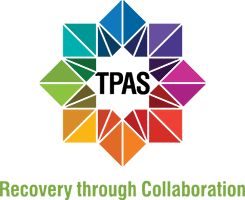The following is a conversation with CooperRiis Chief Clinical Officer, Johnnie Featherston, about borderline personality disorder, the challenges of navigating it, and the significance of family support.
Written by Laura Eshelman
Laura: What is BPD, as defined by a clinician?
JF: I think I would say that there’s a definition in terms of the DSM, but when you’re looking at any of what is categorized as a personality disorder, there are personality features that are part of the human experience. And then certain factors can make those features more intense for an individual. That happens to any of us under stress, but for folks that fall on that spectrum, it is a more pervasive issue and starts to interfere with their life. I think it’s important to start there versus going through [DSM] criteria partly because of our approach. Still, in general, it’s one of the more highly stigmatized areas of diagnosis. This is more broadly true about personality disorders, not just borderline’s particular presentation.
LE: Can you speak to the role that trauma plays in a BPD diagnosis?
JF: There are strong correlations between trauma, especially complex traumas that are pervasive and repeating, and the way that impacts our sense of attachment. That’s a critical piece to work on with families, and that goes into the education about the diagnosis and how to build that sense of security that someone is sorely missing with trauma.
LE: Would you say it’s fair that BPD is one of the more highly stigmatized personality disorders?
JF: Yes. The presentation is challenging. It’s an individual experiencing a lot of pain and turmoil, and that’s being expressed and clashing with the world around them often, so it gets written off very easily as being dramatic or manipulative. Some of the core features are around dysregulation. A key component of that is not having a strong sense of self. The other key feature is dysregulation. That shows up where a lot of the DSM criteria fall. But looking at the behaviors are symptomatic of somebody trying to create safety. There can be a lot of grasping and wanting to make sure relationships don’t go away, but also a real fear of that dependency on them, which leads to pushing them away. That’s what people talk about when they describe [dynamics with someone with BPD] as ‘push-pull’ or ‘walking on eggshells’.
LE: On that note, you’ve named some of the challenges that individuals with BPD face. In your experience, what are some of the challenges their family members and loved ones have to manage?
JF: In our families is where there is more safety, and with that comes more range of expression. Particularly in our immediate family, there’s often more charge, even in solid, functional family systems. When you have somebody [with BPD], it’s often exponentially more pronounced and combustible. You can try different approaches, but things are so sensitive, and there’s a lot of history there. It’s crucial to do some work and healing within the family, but it’s often the most complex and intense place. We’ve seen people do well [at CooperRiis], return home, and struggle in that context. A big piece that I see is families taking feedback, learning, and doing everything right, so to speak, but there’s so much water under the bridge at that point that it takes a lot of foundational work to bring folks back together to get on the same page.
LE: As far as that foundational work goes, when you’ve got somebody with a relatively new diagnosis who is actively engaged in treatment, what are some important ways that loved ones can support them?
JF: One way is to learn as much as possible about it. Unfortunately, because of the stigma, there’s a lot of stuff you can find that reinforces negative attitudes about it. Undoubtedly, mental health practitioners still take a less compassionate, ‘tough love’ stance on it. I’ve seen people find success when they get a variety of perspectives on it, and families find their support through therapy and groups to help them understand. Essentially, it is a willingness to learn and not just dismiss BPD as bad behavior. Lots of validation for their loved one, as hard as it is sometimes, even if it’s rejected by that individual. Those are some pieces that are important for families early on.
LE: We talk a lot and teach our residents about setting healthy boundaries at CooperRiis. But as you alluded to earlier, this is a diagnosis that is very sensitive to rejection. What might loving boundaries look like for family members of someone with BPD?
JF: One of the pieces in my experience that gets people tripped up is reactive or resentful boundaries, where you’re doing it in almost a punitive way. What I think is really important in terms of boundaries is for it not to be arbitrary, and finding ways to explain what you’re doing, like putting the ‘why’ to things. It’s also important to be clear and compassionate while you’re doing that. And a key piece is showing back up, over and over.











